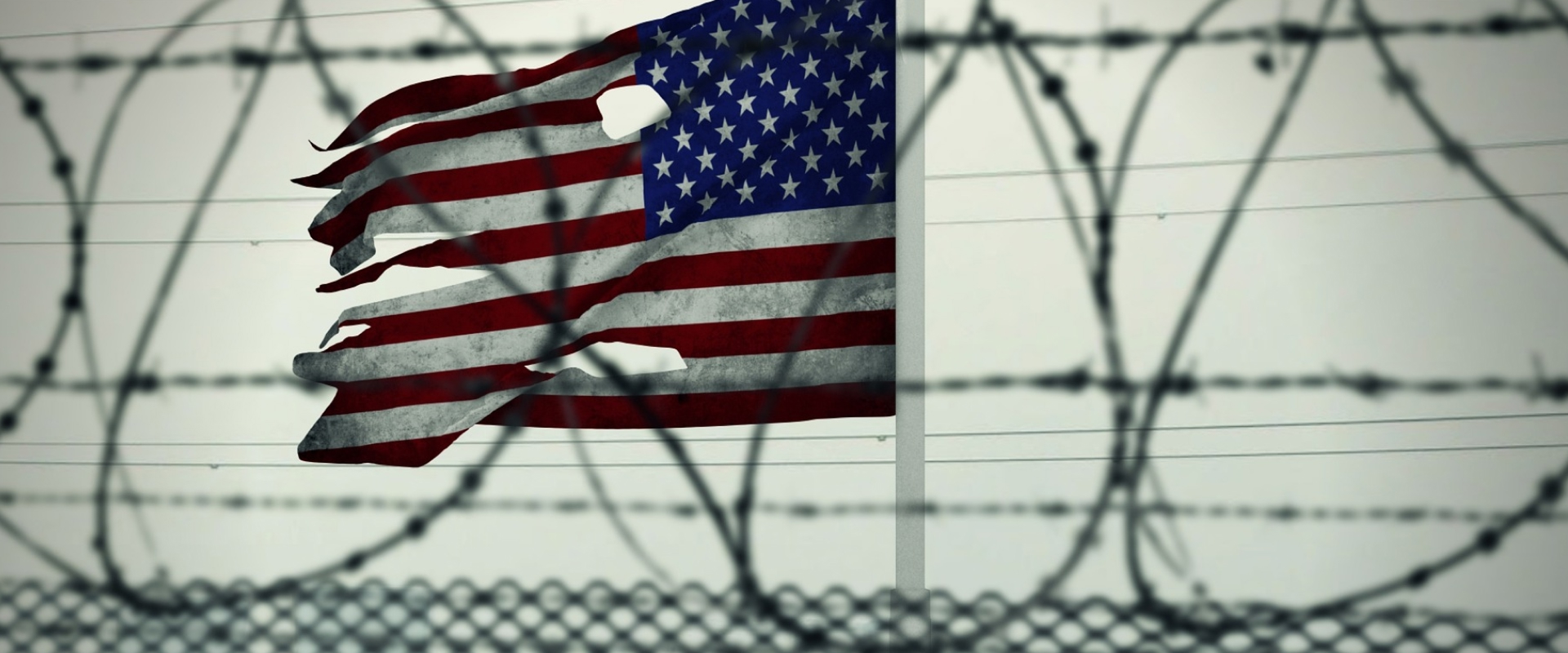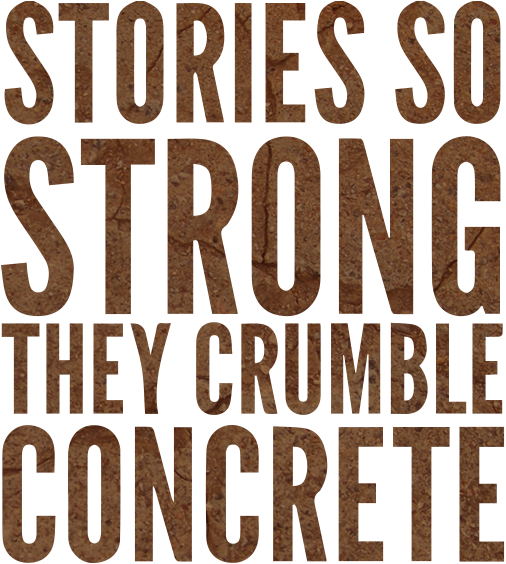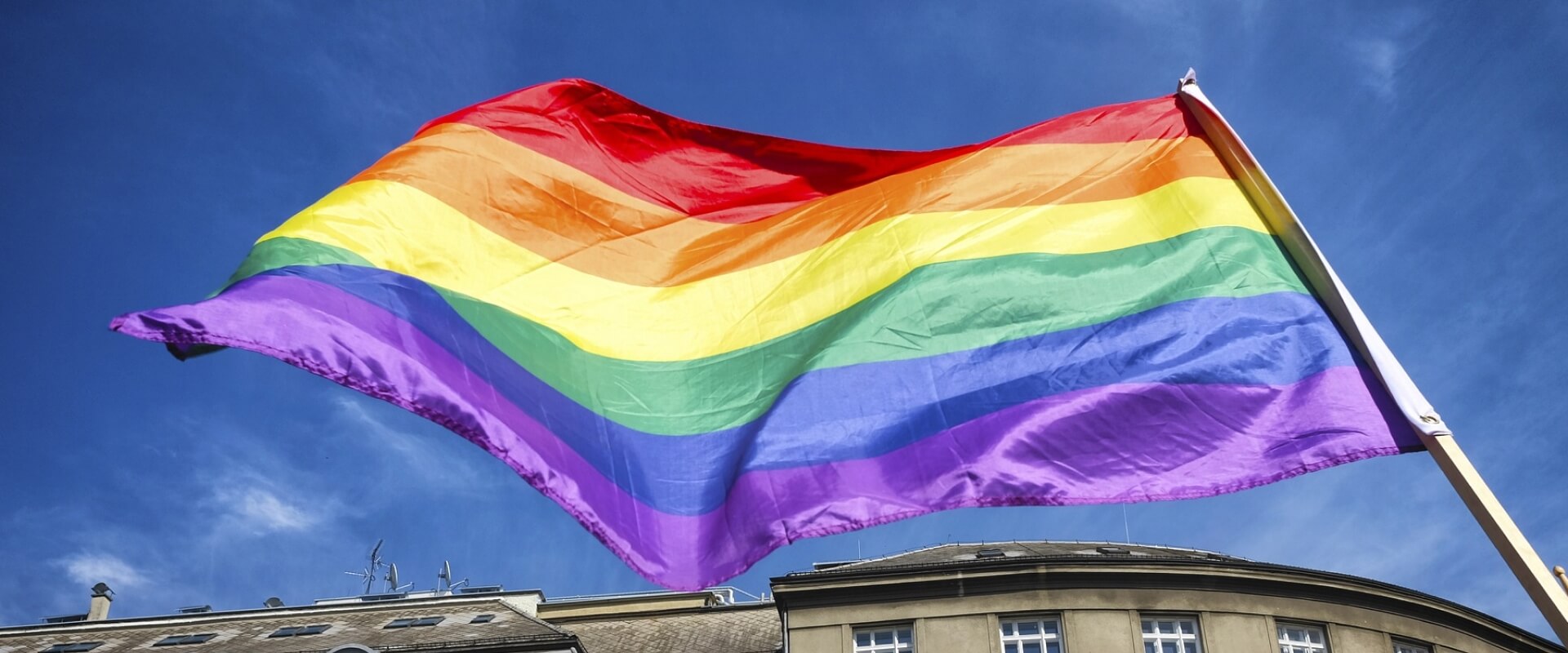Sexuality: Stigma and Punishment
Life In Hell: In California Prisons, An Unconventional Gender Identity Can Be Like An Added Sentence
by Tali Woodward

activism sexual-violence transgender
Rosa casts her dark eyes downward and then looks up from under wispy bangs to say matter-of-factly, “I’ve been raped six times.
“At one time I was raped by five individuals,” she continues in slightly tentative English.
Rosa wasn’t born female, but she says she was very young when she realized “I was special.” Today, she doesn’t just “pass” as a woman—it’s hard to imagine how anyone would see this person with the bewitching eyes and feather-soft voice as anything else.
Except that for the past eight years, Rosa has lived in men’s prisons.
The way the California Department of Corrections and Rehabilitation (CDCR) sees it, Rosa has a penis, and that makes her a man. Never mind that she hasn’t seen herself as male for decades, or that she’s been taking feminizing hormones since her 16th birthday. Rosa, who is serving 15-to-life for stabbing a man she says was trying to kill her, was never able to afford sex-reassignment surgery. The one time she came close to saving enough money, she spent it helping her sister set up a fruit stand in Mexico. So the prison system put her in with the men.
Rosa, 37, isn’t just out of place: In the hierarchical and hypermasculine world of a men’s prison, she’s the ultimate target. She’s been insulted, degraded, and smacked around countless times. If another inmate is feeling feisty, he’s likely to take it out on her. And if it’s sex someone is craving, there are more than a few reasons he’d look to Rosa to satisfy his desires.
It is, of course, a difficult situation for prison officials: Many female inmates don’t want to bunk with a person who has male genitalia. But putting Rosa, and perhaps as many as 200 other transgender inmates, in with the general population is a frightening prospect. Prison rape is common, and even straight men are vulnerable; for a person who identifies as a woman and has feminine looks and breasts, it’s almost inevitable.
No matter how bad things have gotten, Rosa has never gone to prison administrators for help. Behind bars, the victims of rape are often treated as badly as the assailants are, locked in solitary confinement and denied even the very modest freedoms Rosa has come to cherish.
Still, Rosa believes she’s lucky.
She’s currently locked up in the California Medical Facility, in Vacaville, which is considered the most hospitable prison in the state for transgender prisoners. There have been some sympathetic staffers over the years, and a San Francisco doctor tries to get hormones to the inmates who want them. Most important, CMF’s trans prisoners have each other—roughly 50 prisoners who refer to themselves as “the girls” or “family members.”
“In a certain way,” Rosa said, “I have survived here in prison—‘cause I haven’t caught HIV; I haven’t caught no disease; I haven’t been stabbed. So far, I have survived a lot.”
Recently, she’s also been involved a nerve-racking but energizing project: developing a campaign that might compel the CDCR to change how it treats prisoners who don’t conform to traditional gender roles.
Of course, activism is a little trickier when you’re behind bars, and the prisoners have reason to believe there will be repercussions for their efforts. Nonetheless, some agreed to tell their stories—on the condition that their real names not be used.
A Silent Crisis
Transgender women are more likely to end up in prison than virtually anyone else. The oft-quoted statistic about African American men—that one in four has a history of incarceration—is dwarfed by the available stats on people who are male-to-female, or MTF. A San Francisco Department of Public Health survey conducted in 1997 found that almost two thirds of MTF respondents had been incarcerated. More than 30 percent had spent some time behind bars during the preceding 12 months.
Most people agree that the high incarceration rate is due mainly to the difficulty trans people have finding and keeping work. To survive, they often turn to sex work, drug dealing, or other illegal forms of moneymaking—and, in the process, greatly increase their risk of arrest.
“As long as trans people have been excluded from the legal economy, they’ve been in prison,” says Alexander Lee, an attorney who founded the Oakland-based Transgender, Gender Variant, and Intersex Justice Project.
There’s no official count of how many California inmates are trans, but Lee, who has had contact with about 80 prisoners in the past couple years, estimates there are probably 200 transgender inmates throughout the state penal system—and at least another thousand who are gender variant, meaning they bend traditional gender roles in some way. (This includes particularly masculine women or effeminate men.) Prisoners are far more likely to be MTF than FTM.
Housing Quandries
In interviews and signed accounts reviewed by the Guardian, California’s trans prisoners report numerous challenges. But their primary complaints are about rampant sexual assault—and the system’s apparent tolerance for it.
Ele Tsu is a Native American who was adopted by a Los Angeles couple at birth. “Growing up, I had this feeling of femininity,” she told us. “But I never expressed it. I would look at girls and say, ‘Gee, Mom, how come she gets to wear a dress and I don’t?’”
For many years, Ele Tsu lived as a man. She got married, joined the Mormon Church, and had several kids. She worked for a telecommunications company and describes herself as a “workaholic.” But then she had a nervous breakdown and “picked up a homicide.” She pleaded no-contest and was sentenced to 25-to-life. She came out as transgender while in prison and has been in CMF off and on since 1984.
Prison housing policies, Ele Tsu says, can set the stage for the sexual abuse of trans prisoners, particularly those who have breasts, as she does.
“Would you put your daughter in a locked room with 11 or 12 men and say, ‘Fend for yourself’?” she asks.
Ele Tsu now lives in a cell but says that when she was assigned to a dorm, “I was lucky if I could have one or two nights a week where I wasn’t bothered.
“Sometimes I would wake up with somebody’s hands going up my pants or massaging my breasts. Or something would brush up against my lips—and it was a fully erect penis.”
But molestation isn’t limited to the dorms.
At one point Rosa was assigned to a cell with a “60-something-year-old man [who] claimed to be Christian.” She says her cellmate repeatedly touched her in the middle of the night. She was confident she could have beaten him off, but she was similarly convinced he would report it—and she would end up in a rougher, higher-security prison.
Rosa says she tried, and failed, to get prison staff to intervene. Only after her cellmate kicked her was she moved out—and into a dorm.
She says her dorm situation is better than most. For one thing, there’s a gay prisoner in her unit. Also, she’s been romantically involved with a “respected” inmate for three years. She says even though he lives elsewhere, the relationship offers her more than a modicum of protection.
Still, Rosa points out, “There’s no privacy in there—you live in a dorm with 11 individuals ... I have to cover myself to put my bra on.”
“Rapes occur with frequency,” Ele Tsu told us. “And we’ve learned to keep our big mouths shut because what happens is we are victimized again. We’re called liars; people say, ‘You enticed them, you didn’t have your bra on, you were dressed in an overly feminine condition. You asked for it.’”
When sexual assault is reported, inmates say, the victim and the perpetrator get the same treatment: Both are locked up in Administrative Segregation, or Ad Seg.
Prison officials point say this is partly to protect the victim. Dr. Joseph Bick, the chief medical officer at CMF, expressed surprise at inmates’ stories of sexual assault, saying, “I’ve never had a patient, in 13 years, disclose to me that they’ve been sexually assaulted here.” But he added that given the realities of prison assaults throughout the country, “I would be putting my head in the sand if I said there had never been a sexual assault within [the state prison system] or at the California Medical Facility.” He defended the policies for putting a prisoner in protective custody after he or she reports an assault: “We have an immediate responsibility to make sure that doesn’t happen again.”
But the realities of Ad Seg—an 8-by-10-foot cell with only a mattress and blanket, no work or school, less than two hours a day outside of the cell—make it an intolerable prospect for many inmates.
“There’s many of us who are willing to come forward and prosecute,” says Ele Tsu, who has personally complained to prison officials about the sexual assault problem. “But the state won’t go for it.”
Abuse and Care
The most common issue for TG prisoners, however, seems to be simple harassment.
“They treat you like ‘that,’ ‘it,’ or ‘whatever he is,’ ” Rosa said of her fellow inmates. She’s usually referred to as “he” and often called a “faggot,” despite her womanly bearing and the fact that she is involved with an inmate who considers himself straight. There’s a general attitude that “you decided to be like this, [you] brought it upon yourself,” Rosa says. “Nah—I didn’t choose to be rejected. I didn’t choose to be humiliated. I didn’t choose to be beat up. I didn’t choose to be raped.”
According to some, harassment is just as likely to come from prison staff. Lee says different people in different prisons have told him the guards will routinely demean them—over the PA system.
TG inmates can also get in trouble for expressing what they feel is their rightful gender. Grooming standards require them to keep their hair short and, in some facilities, makeup is even considered contraband. If prisoners can’t buy cosmetics, some will resort to crushing brick or colorful pages from magazines in order to make it themselves.
Prisoners say CMF has never provided bras to trans inmates with hormone-induced breasts. A few years ago, inmates were allowed to buy and wear them. Now sometimes inmates need the equivalent of a prescription from the medical staff. “Since when is a bra a medical device?” Ele Tsu asks.
But when it comes to medicine, CMF prisoners admit they’re at a real advantage.
In 1999 former California inmate Torey South won damages from the CDCR for preventing her from continuing hormone treatments when she was transferred from CMF to California Men’s Colony in San Luis Obispo. Abruptly stopping hormone treatment can cause vomiting, dizziness, and serious mental health problems.
Trans advocates say that despite the clear legal mandate in the South case, access to trans care is still spotty throughout the prison system. But CMF has a reputation for providing the same kind of medical attention that a trans person might get outside of prison.
San Francisco General Hospital’s Dr. Lori Kohler, who is a specialist in trans care, travels to Vacaville every six weeks to make sure trans-identified inmates are getting their hormones.
“There was a lot of resistance to this work when I got there,” in 1999, Kohler told us. Other doctors “wouldn’t renew my orders and wouldn’t send patients to see me.”
Today, she said, the access problems she sees within the prison system are similar to those she sees outside. “It’s a big mark on our society that we’re doing such a bad job of including [transgender people],” she said. But she is hopeful about new CDCR guidelines on trans care now in the works.
Chief medical officer Bick noted that trans inmates do not have access to sex-reassignment surgery, but that even the provision of hormones has been controversial. He defended the practice, however, saying, “It is essential for a society to be concerned about the health of those it chooses to incarcerate.”
Both doctors stressed that appropriate care can have a huge impact on the lives of inmates once they leave prison.
“Providing access to hormones and acknowledging someone’s identity can improve quality of life and [reduce] chances for reoffense,” Kohler said.
Campaign for Safety
The prison system, it appears, is utterly, perhaps willfully, unprepared for dealing with trans inmates. In the 204-page document that lays out California prison regulations, there is no mention of “transgender,” “transsexual,” “gender dysphoria,” “transvestite,” or “cross-dresser.” There is one incidence of “homosexual”—it says that an inmate’s orientation may require a special housing placement.
Corrections spokesperson Terry Thornton told us she looked for the relevant policies but wasn’t able to locate them by our deadline.
Ele Tsu, Rosa, and a handful of other gay and trans prisoners at CMF are pushing for action—with an optimism that is hard to reconcile with their situation.
The group initially came together in 2004, and with some support from prison staff, they drew up a reform proposal. They had a series of meetings with administrators, including, eventually, the warden. Then, in January 2005, there was a change in prison leadership and the project was sidelined.
Eventually, that fall, members of the group contacted a local grassroots group called Trans/Gender-Variant in Prison Committee for help. Since then, with support from TIP and from Lee, the committee has focused on getting CMF to change the process for investigating reports of sexual assault. They want those who report it to be kept out of Ad Seg and placed instead in a single cell during the course of the investigation. If their suggestions are taken, they would affect any prisoner reporting an assault, not just those who are queer.
“There needs to be a system that protects all inmates, regardless of our sexual orientation, gender identity, race, ect. [sic],” one inmate wrote in a statement. “I should not suffer more because a sexually violent preditor [sic] decided to assault me.”
“We recognize as a fact of life that those who do not fit a gender stereotype are going to be vulnerable,” Assemblyperson Mark Leno said.
Leno also said that he is encouraged that the Prison Rape Elimination Act, which went into effect this year, will require more safety training of prison staff throughout the state. But, he pointed out, “the bigger picture is that the entire prison system is in meltdown.”
It’s not impossible to develop sensitive policies for dealing with incarcerated transgender people. In San Francisco, the Sheriff’s Department has beefed up sensitivity training, by all accounts greatly improving the environment. According to Undersheriff Jan Dempsey, the jails now try to refer to prisoners by their preferred pronouns and let them do their hair and makeup as they wish. Although the jails also house prisoners according to their genitalia, when possible, they put all the trans women together in one dorm. “It’d be nice if we had a third housing option, but we don’t,” Dempsey said.
The jails also turn to trans community groups when they need help. “It’s an ongoing thing; we’re not perfect by any stretch,” Dempsey acknowledged. “[But] I think the training has probably helped a lot.”
The CMF prisoners don’t expect such flexibility from the CDCR—at least not immediately. In fact, they expect they will be punished for trying to change things.
Ele Tsu believes she’s already suffered retaliation. For a few months after a visit from TIP, she lost her job in the jail hospice, which she says “tore my soul out.” Then right after Lee wrote a letter to the warden summarizing Ele Tsu’s concerns about sexual assault, she was told she might soon be shipped off to another prison—possibly San Quentin. After TIP, the American Civil Liberties Union and others wrote letters saying the threat appeared retaliatory, it subsided.
Prison officials said the whole thing was part of a system-wide reorganization, but Ele Tsu is not persuaded.
When we met, she made several slightly wicked jokes about what awaits her—but she didn’t dwell on it. Nothing’s going to change, she told me, “Until the public or the courts step in and say, ‘You’re not going to do this anymore.’ ”



